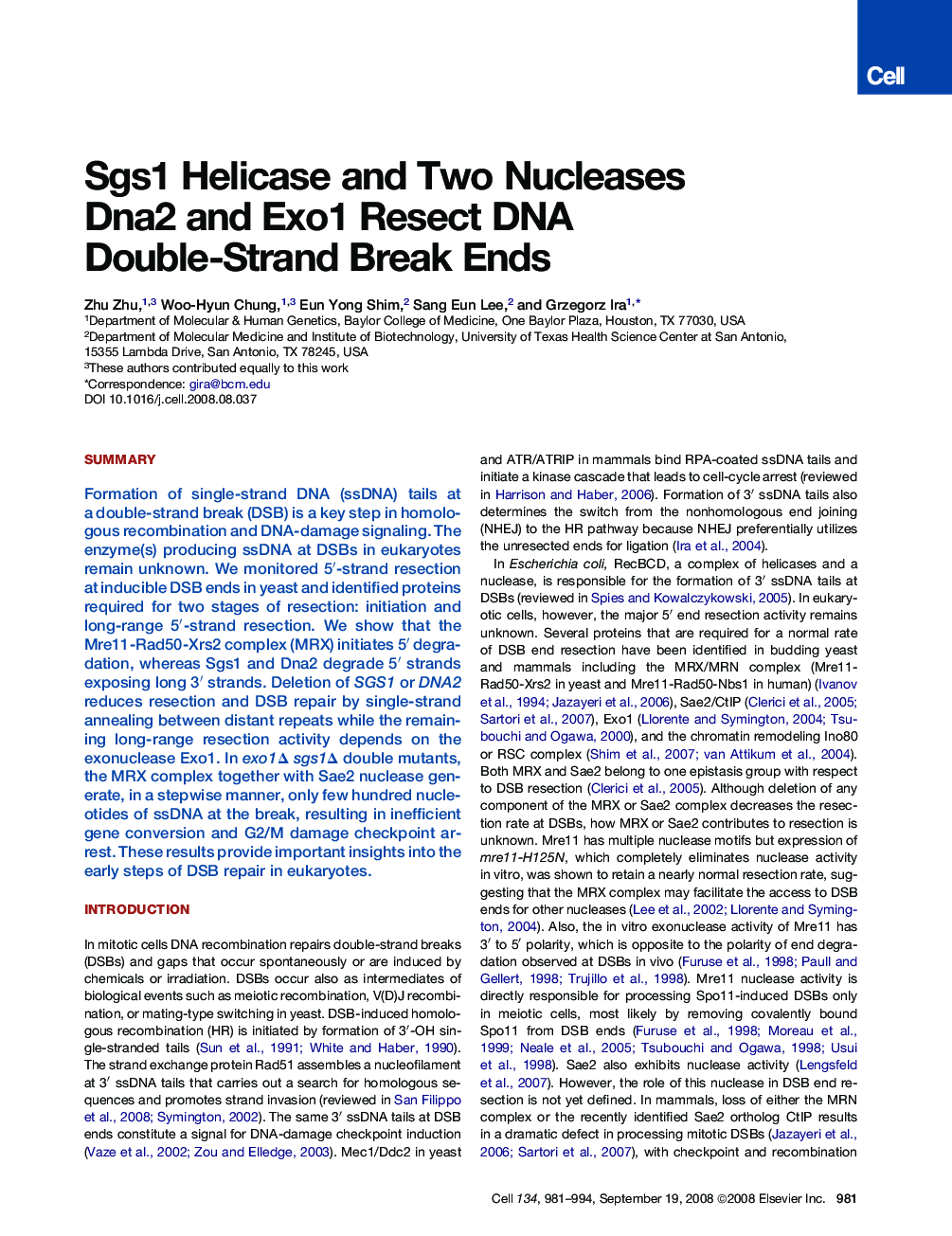| Article ID | Journal | Published Year | Pages | File Type |
|---|---|---|---|---|
| 2038015 | Cell | 2008 | 14 Pages |
SummaryFormation of single-strand DNA (ssDNA) tails at a double-strand break (DSB) is a key step in homologous recombination and DNA-damage signaling. The enzyme(s) producing ssDNA at DSBs in eukaryotes remain unknown. We monitored 5′-strand resection at inducible DSB ends in yeast and identified proteins required for two stages of resection: initiation and long-range 5′-strand resection. We show that the Mre11-Rad50-Xrs2 complex (MRX) initiates 5′ degradation, whereas Sgs1 and Dna2 degrade 5′ strands exposing long 3′ strands. Deletion of SGS1 or DNA2 reduces resection and DSB repair by single-strand annealing between distant repeats while the remaining long-range resection activity depends on the exonuclease Exo1. In exo1Δ sgs1Δ double mutants, the MRX complex together with Sae2 nuclease generate, in a stepwise manner, only few hundred nucleotides of ssDNA at the break, resulting in inefficient gene conversion and G2/M damage checkpoint arrest. These results provide important insights into the early steps of DSB repair in eukaryotes.
